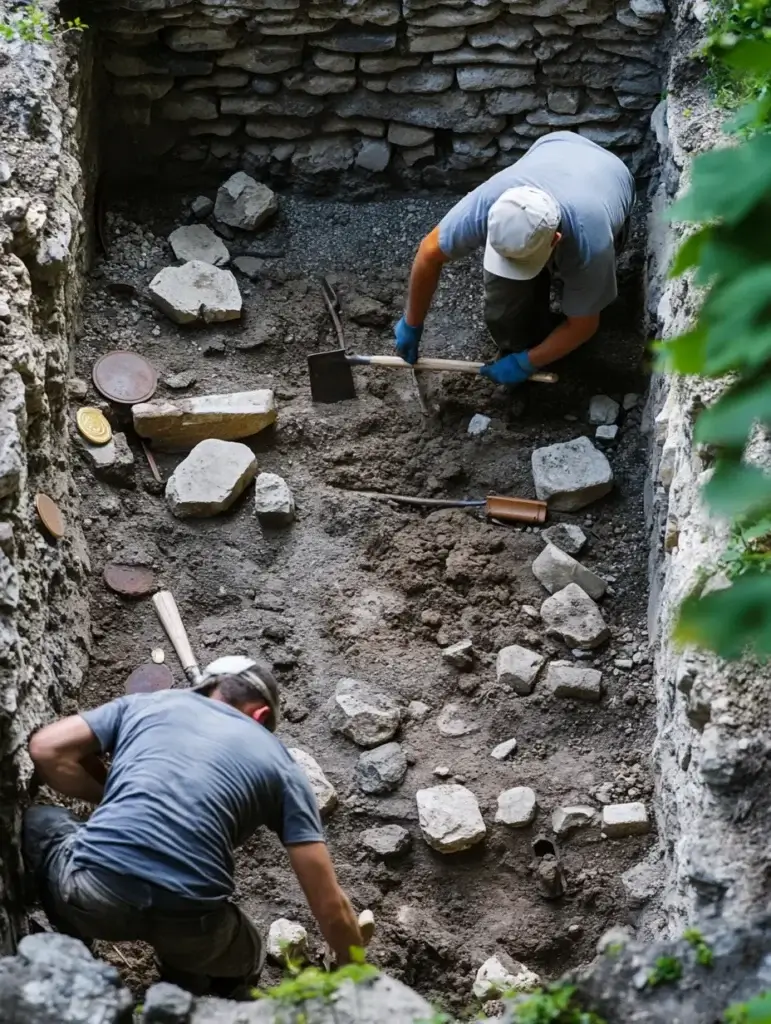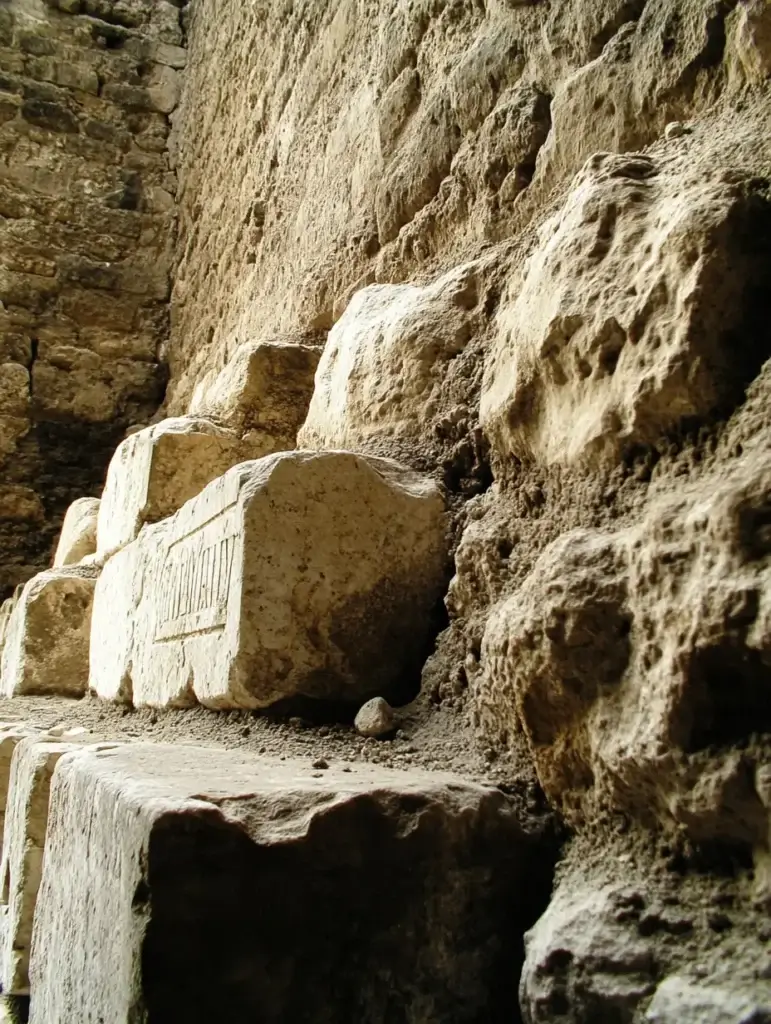Introduction
Archaeologists in Switzerland have made an incredible discovery—a remarkably well-preserved Roman wall dating back nearly 2,000 years. Found in Windisch, this find has captivated historians and the public alike. The wall’s excellent condition sheds light on
Roman influence and architectural skill in ancient Europe. This article explores the discovery, its historical context, and its broader implications for understanding Roman architecture and military strategy.
The Discovery: Uncovering a Piece of Roman History
The Site of the Discovery

The Roman wall was discovered during construction work in Windisch, Switzerland. Windisch, known as Vindonissa during Roman times, was a significant military camp and settlement. It was strategically located at the confluence of the Aare, Reuss, and Limmat rivers. The site served as a key defensive outpost on the Roman Empire’s northern frontier.
Construction workers uncovered a section of the wall, prompting archaeologists to halt work and begin an excavation. The wall, buried under layers of soil and vegetation, had remained hidden for nearly two millennia. The fact that it remained undetected for so long speaks to the dense historical layers in the region.
The Condition of the Wall
The wall’s preservation is extraordinary. Despite being buried for centuries, the stone blocks remain intact, and the mortar binding them is still strong. This level of preservation allows archaeologists to study Roman construction techniques in detail. The wall stands several meters high, built from large stone blocks carefully cut and fitted together. The precision in construction highlights Roman engineering prowess. The preserved features, including possible inscriptions, provide valuable insights into Roman military architecture.

Historical Significance of the Roman Wall
The Roman Presence in Switzerland
The discovery highlights the extent of Roman influence in Switzerland. Vindonissa was more than a military outpost; it was a hub of Roman administration, culture, and commerce. The town played a critical role in the Roman Empire’s northern defenses, guarding against invasions by Germanic tribes and other groups. The wall’s discovery underscores the importance of Vindonissa in Roman military strategy.
Insights into Roman Engineering and Military Strategy
The wall offers valuable insights into Roman engineering practices and military strategy. Roman builders were skilled in constructing durable structures, and this wall exemplifies their expertise. The use of large stone blocks, precise masonry, and durable mortar ensured the wall could withstand natural and human threats.
The discovery raises questions about the broader defensive strategies employed by the Romans in Switzerland. How extensive was the fortification network in the region? What role did Vindonissa play in Roman military operations? These are questions archaeologists and historians will explore as they continue to study the site.
Romans were strategic in placing military outposts, often choosing locations with natural advantages. Vindonissa’s position at the confluence of three rivers offered both a defensive advantage and control over trade routes. The wall, therefore, was not just a defensive structure; it was a critical component of the Romans’ broader strategy to maintain control over their empire’s northern frontiers.

The Impact of the Discovery
Advancing Our Understanding of Roman Switzerland
The discovery is a significant addition to our understanding of Roman Switzerland. It provides tangible evidence of the Roman military presence and offers insights into the daily lives of those in Vindonissa. The wall’s preservation allows for a detailed study of Roman construction techniques, giving information about the materials and methods used by Roman engineers.
This discovery also emphasizes the need for continued archaeological exploration in Switzerland. The region’s rich Roman history is still being uncovered, and more significant finds are likely waiting to be discovered. The wall’s preservation demonstrates the durability of Roman construction and the meticulous planning that went into building such structures.
Broader Implications for Roman Archaeology
The wall’s discovery has broader implications for Roman history and archaeology. It underscores the importance of Roman engineering and the empire’s ability to project power across vast distances. The preservation of the wall also highlights the durability of Roman construction techniques, which have allowed structures like this to survive for nearly two millennia.
The discovery is expected to generate significant interest within the archaeological community and the general public. It serves as a reminder of the Roman Empire’s enduring legacy and the importance of preserving cultural heritage. The wall’s preservation offers a unique opportunity to study Roman construction techniques and defensive strategies, providing valuable insights into the empire’s military architecture.
The Role of Technology in the Discovery
The discovery also highlights the role of modern technology in archaeology. Ground-penetrating radar and other advanced tools allowed archaeologists to identify the wall’s location and structure before excavation. These technologies have revolutionized archaeology, enabling researchers to uncover and study ancient structures with precision.
As archaeologists continue to explore the site, they will likely use various technological tools to analyze the wall and its surroundings. These tools will help them understand the wall’s construction, its purpose, and its place in the broader context of Roman Switzerland.
Conclusion
The discovery of the ancient Roman wall in Switzerland is a sensational find offering new insights into Roman engineering and the empire’s influence. The wall’s preservation provides a unique opportunity to study Roman construction techniques and defensive strategies, contributing significantly to our understanding of Roman history in Switzerland and beyond. This remarkable discovery serves as a testament to the Roman Empire’s enduring legacy and the importance of preserving our shared cultural heritage. As archaeologists continue to study the site, the wall will undoubtedly reveal more about the Romans’ presence in Switzerland and their impact on the region’s history.
